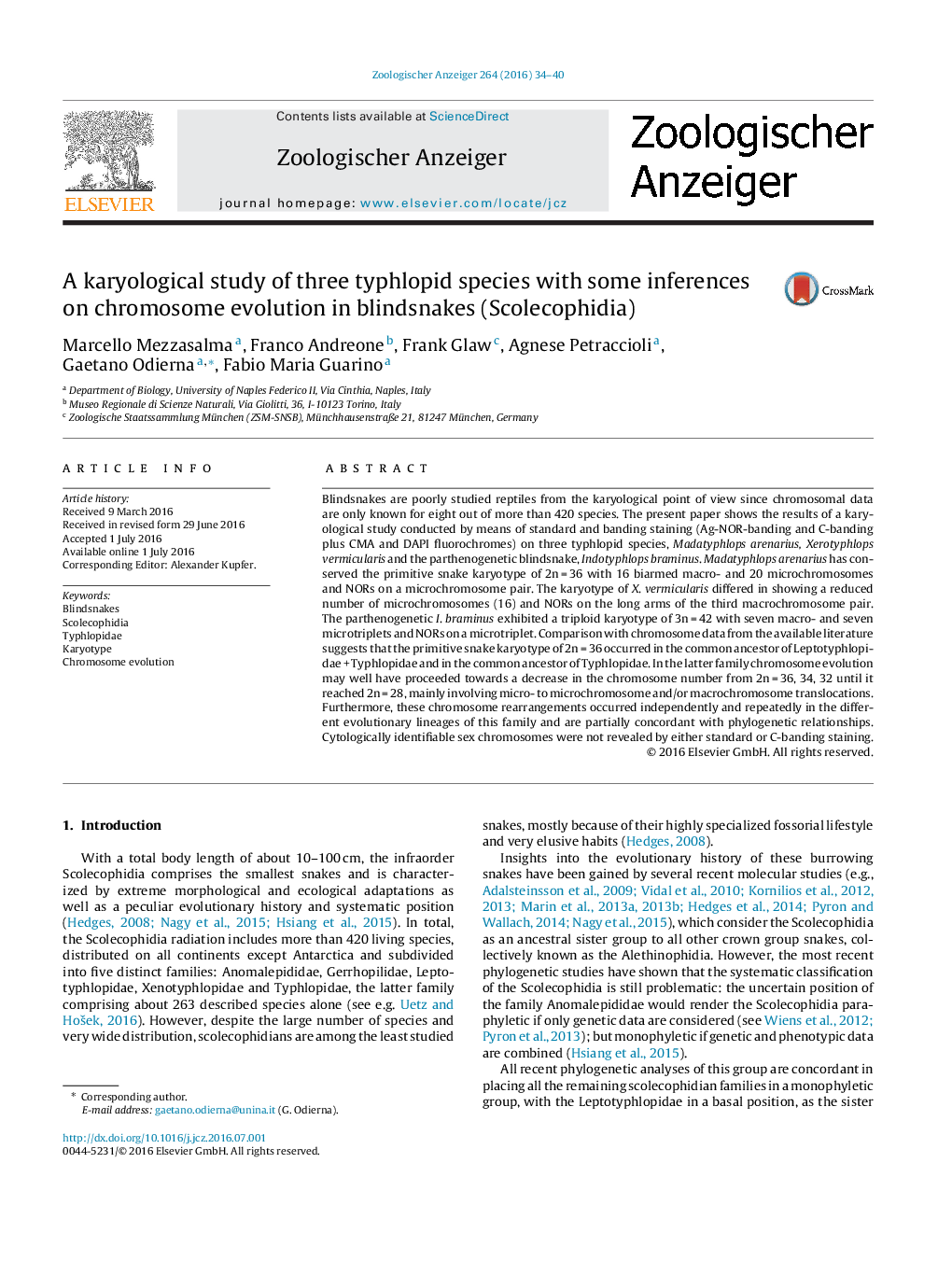| Article ID | Journal | Published Year | Pages | File Type |
|---|---|---|---|---|
| 2790444 | Zoologischer Anzeiger - A Journal of Comparative Zoology | 2016 | 7 Pages |
Blindsnakes are poorly studied reptiles from the karyological point of view since chromosomal data are only known for eight out of more than 420 species. The present paper shows the results of a karyological study conducted by means of standard and banding staining (Ag-NOR-banding and C-banding plus CMA and DAPI fluorochromes) on three typhlopid species, Madatyphlops arenarius, Xerotyphlops vermicularis and the parthenogenetic blindsnake, Indotyphlops braminus. Madatyphlops arenarius has conserved the primitive snake karyotype of 2n = 36 with 16 biarmed macro- and 20 microchromosomes and NORs on a microchromosome pair. The karyotype of X. vermicularis differed in showing a reduced number of microchromosomes (16) and NORs on the long arms of the third macrochromosome pair. The parthenogenetic I. braminus exhibited a triploid karyotype of 3n = 42 with seven macro- and seven microtriplets and NORs on a microtriplet. Comparison with chromosome data from the available literature suggests that the primitive snake karyotype of 2n = 36 occurred in the common ancestor of Leptotyphlopidae + Typhlopidae and in the common ancestor of Typhlopidae. In the latter family chromosome evolution may well have proceeded towards a decrease in the chromosome number from 2n = 36, 34, 32 until it reached 2n = 28, mainly involving micro- to microchromosome and/or macrochromosome translocations. Furthermore, these chromosome rearrangements occurred independently and repeatedly in the different evolutionary lineages of this family and are partially concordant with phylogenetic relationships. Cytologically identifiable sex chromosomes were not revealed by either standard or C-banding staining.
